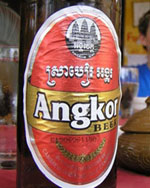Khmer Foods
| Cambodia food is closely related to the cuisines of neighboring Thailand and Laos and, to a lesser extent, Vietnam, but there are some distinct local dishes. The overall consensus is that Khmer cooking is like Thai without spicy. Curries, stir tried vegetable, rice, noodles and soups are staples of the Khmer diet. Cambodia is well known in the region for its Prahok, a strong, fermented fish paste used in a variety of traditional dishes. Fresh serve bottled drinking water and tap water should never be drunk. Similarly, salad and fruit served at these establishments are safe. All Tours are based on full board arrangements. For full-day excursions, picnic lunch can be provided if no adequate restaurants are available. Phnom Penh is far and away the best place to try inexpensive Khmer cuisine, though Siem Reap also has some good restaurants. One of the easiest and most affordable ways to acquaint yourself with Khmer cooking is to wander into the food stalls found in markets all over the country and simply sample each dish before deciding what to eat. In Phnom Penh you also have the choice of excellent Thai, Vietnamese, Chinese, French and Mediterranean cooking. Rice is the principal staple in Cambodia and the Battambang region is the country's rice bowl. Most Cambodian dishes are cooked in a wok, known locally as a chhnang khteak. | |||||||||
| |||||||||
|



